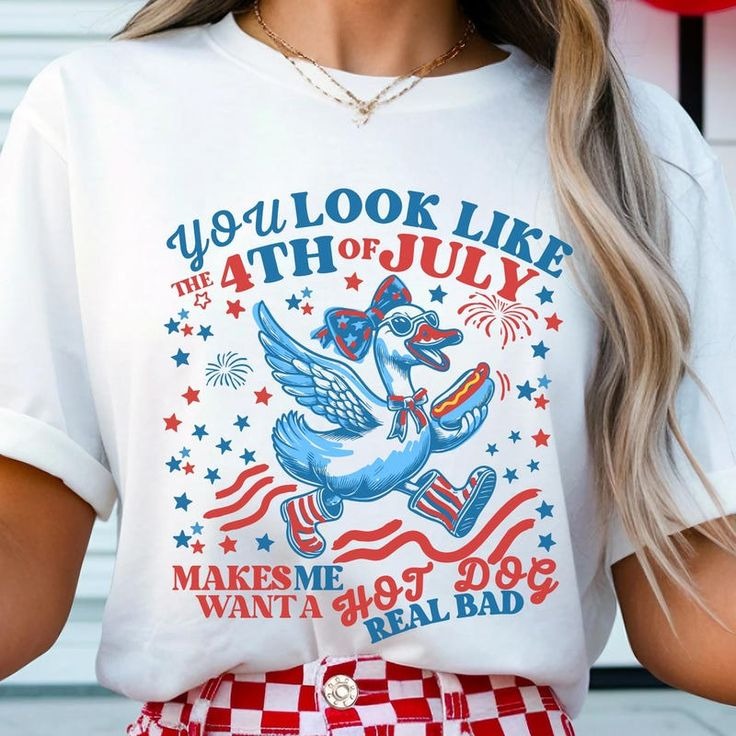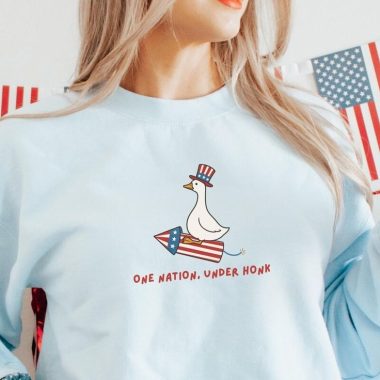Introduction
Fashion has long transcended its fundamental purpose of covering the body. It weaves together narratives of culture, identity, innovation, and ethics into every garment we wear. At its core, fashion is an artistic medium through which individuals communicate their inner selves and engage in a larger societal dialogue. Over millennia, clothing has evolved from rudimentary animal skins and woven grasses into intricate ensembles that blend craftsmanship with cutting‑edge technology. This evolution reflects humanity’s enduring quest for self‑expression, communal belonging, and progress. In this article, we will embark on a detailed journey through fashion’s historical foundations, its role as cultural conversation, its function as a canvas for personal identity, the urgent call for ethical responsibility, the transformative impact of digital innovation, and the boundless possibilities that lie ahead.
Historical Foundations
The story of fashion begins with humanity’s earliest attempts to protect itself from the elements. Primitive coverings fashioned from animal hides and large leaves served strictly utilitarian aims, yet even these humble garments carried markers of status and tribal affiliation. As humans discovered how to spin fibers from plants and animals into yarn, they unlocked new realms of creativity. Early civilizations such as those of Mesopotamia, the Indus Valley, and ancient Egypt developed sophisticated weaving techniques that yielded linen, wool, and cotton fabrics. These textiles were often dyed with natural pigments derived from plants, minerals, and insects, imbuing garments with symbolic hues. In ancient Egypt, for example, the purity of white linen signified spiritual holiness, while the deep blues and reds favored by royalty conveyed divine authority.
The rise of trade routes such as the Silk Road transformed local garment traditions into global exchanges of material and technique. Chinese silk captivated Western markets, leading to the establishment of caravan networks that spanned continents. Indian cottons, prized for their fine weave and vibrant dyes, traveled to the Middle East and Europe, inspiring local artisans to adopt and adapt these innovations. In turn, the spread of these materials contributed to the rise of guilds in medieval Europe, where master weavers and dyers guarded their methods closely. Through these exchanges, fashion became a powerful indicator of social stratification. Sumptuous velvets, brocaded silks, and fur trims adorned the noble classes, while simpler woolen tunics and homespun linens clothed peasants. Distinctive headdresses, belts, and jewelry further communicated rank and regional identity.
The Renaissance ushered in an era of unprecedented opulence and artistic collaboration. Tailors worked alongside painters, sculptors, and architects, creating garments that echoed the era’s aesthetic ideals. The interplay of light and shadow in velvet, the complex floral patterns woven into tapestries, and the precise tailoring of doublets and gowns all spoke to a humanist sensibility that celebrated both the individual form and the grandeur of collective achievement. Innovations in printing and pattern books allowed styles to disseminate more rapidly, and portraiture immortalized the fashionable conventions of courts across Europe.
The Industrial Revolution marked a watershed moment in fashion history. The mechanization of spinning and weaving reduced the time and cost of textile production, while the invention of the sewing machine enabled the rapid assembly of garments. Ready‑to‑wear clothing factories emerged, democratizing fashion by making once‑elite styles accessible to the burgeoning middle class. Department stores and mail‑order catalogs further expanded access, turning fashion into a mass‑market phenomenon. Yet this democratization also gave rise to concerns about quality and artistry. Critics lamented the decline of bespoke tailoring and artisanal craftsmanship, even as they recognized the empowering potential of broader choice.
Cultural Significance and Dialogue
Fashion functions as a living conversation between individuals and their societies. Every garment carries coded messages about origin, aspiration, conformity, or rebellion. In many cultures, traditional dress remains a potent symbol of collective memory and identity. The kimono in Japan, the sari in South Asia, and the kente cloth in West Africa each bear centuries of ritual meaning and artisanal heritage. When designers reinterpret these traditional forms for contemporary audiences, they engage in a delicate balance between homage and innovation. Such dialogues can revitalize endangered crafts, yet they also raise questions about cultural appropriation and authenticity.
Throughout history, marginalized communities have used clothing as an act of resistance. In eighteenth‑century Europe, for example, the sans‑culottes rejected aristocratic fashion in favor of simpler pantaloons, signaling solidarity with revolutionary ideals. In the twentieth century, the zoot suits of African American and Latino youth in the United States defied dominant social norms, leading to both acclaim and controversy. Today’s streetwear movements build on this legacy, as designers and wearers remix high‑end tailoring with athleticwear, workwear, and repurposed fabrics. This fusion creates dynamic expressions of identity that ripple across social media, retail, and runway alike.
The cultural conversation around fashion also encompasses the tension between global trends and local specificity. While digital platforms disseminate images of fashion weeks in Paris, Milan, and Tokyo to audiences worldwide, local makers and consumers continue to craft regionally resonant styles. In Mexico, for instance, contemporary designers collaborate with indigenous artisans to blend traditional embroidery with modern silhouettes, forging garments that speak to both heritage and cosmopolitan currents. This interplay between the global and the local enriches the fashion landscape, ensuring that diversity and dialogue remain central to the art of attire.
Personal Identity and Self‑Expression
At its core, fashion is profoundly personal. Each day, the act of dressing becomes a ritual of self‑curation, an opportunity to present our inner worlds to the external world. Some individuals gravitate toward avant‑garde statements, experimenting with unusual shapes, bold textures, and unexpected color combinations. Others find solace in timeless classics—well‑cut tailoring, neutral palettes, and minimal embellishment—that evoke calm and refinement. In all cases, clothing serves as a form of psychological armor. It can embolden the wearer, providing confidence during challenging tasks, or offer comfort by recalling cherished memories and associations.
Wardrobes evolve alongside life’s milestones and transitions. Ceremonial attire—wedding gowns, graduation robes, religious vestments—marks rites of passage and communal recognition. Professional attire, whether the crisp suit or the casual smart ensemble, signals competence and belonging within particular fields. Leisurewear, from cozy loungewear to avant‑garde festival costumes, communicates one’s desires for comfort, joy, or communal celebration. Each garment captures a moment in time, an emotional state, or an aspiration. Over the years, wardrobes accumulate like personal archives, revealing patterns of growth, experimentation, and transformation.
Fashion’s role in identity extends beyond individual expression to encompass collective movements. The queer community, for example, has long used fashion to articulate fluidity, subversion, and pride. Drag culture transforms garments into tools of theatricality and self‑discovery, challenging binary notions of gender. In similar ways, androgynous and gender‑neutral designs invite broader audiences to transcend traditional norms. These developments remind us that clothing is not merely passive decoration but an active agent in shaping perceptions and possibilities.
The Ethical Imperative
In recent decades, fashion’s environmental and social footprint has come under intense scrutiny. The conventional model of seasonal turnover—fast fashion—encourages consumers to treat garments as disposable commodities, contributing to overflowing landfills and polluted waterways. Textile dyeing alone accounts for a significant share of industrial water pollution. Moreover, the demand for cheap labor in global supply chains has led to exploitative working conditions in factories around the world.
In response, a growing movement within the industry champions sustainability as a core principle. Designers are experimenting with regenerative agricultural methods to cultivate fibers such as organic cotton, hemp, and Tencel in ways that enrich soil health and reduce chemical inputs. Innovations in low‑impact dyeing processes, including plant‑based and waterless techniques, aim to minimize toxic runoff. Circular economy initiatives promote repair, resale, and rental models that extend the lifespan of garments. Brands collaborate with artisans and cooperatives to ensure fair trade practices and the preservation of traditional crafts.
Transparency has become a watchword in responsible fashion. Blockchain technology, for instance, enables brands to track the journey of a garment from seed to shelf, allowing consumers to verify claims of ethical sourcing. Certifications and third‑party audits provide additional accountability. As consumers grow more conscientious, they demand clarity about where and how their clothing is made, shifting purchasing power toward brands that uphold environmental stewardship and social justice.
Digital Innovation and Democratization
The advent of the digital age has radically transformed how fashion is designed, marketed, and consumed. Social media platforms curate a constant stream of visual inspiration, collapsing geographic distances and amplifying diverse voices. Influencers and micro‑communities share personal outfits in real time, catalyzing micro‑trends that can swiftly permeate global consciousness. Runway shows, once exclusive events limited to industry insiders, now live‑stream to millions of viewers, democratizing access to the latest innovations.
Technological tools have also revolutionized design and production. Computer‑aided design software allows for intricate patternmaking and seamless collaboration across continents. 3D printing offers the potential for on‑demand fabrication of bespoke accessories and technical garments. Virtual fitting rooms and augmented‑reality mirrors empower consumers to try on multiple styles without leaving home, reducing return rates and associated environmental costs. Data analytics inform design decisions by revealing consumer preferences in near real time, enabling brands to craft more responsive collections.
Digital marketplaces provide a global stage for independent designers and small‑scale artisans. Online platforms enable these creatives to reach customers without the overhead of brick‑and‑mortar retail, fostering entrepreneurship and design diversity. Crowdfunding campaigns support experimental projects that might struggle to find traditional investment. In these ways, technology enhances both the creative and commercial dimensions of fashion, expanding possibility while challenging established hierarchies.
Toward an Inclusive Tomorrow
Inclusivity has emerged as a central theme in contemporary fashion discourse. Expanding size ranges recognizes that beauty and style transcend rigid numerical categories. Adaptive clothing designs prioritize the needs of people with disabilities, integrating functional features—magnetic closures, adjustable seams, accessible openings—without sacrificing aesthetic appeal. Runways and campaigns now showcase models of varied ages, body types, ethnicities, and abilities, offering a truer reflection of society’s richness.
True inclusivity extends beyond representation to encompass systemic change. Brands that champion inclusivity invest in diverse leadership teams, ensuring that multiple perspectives shape design, marketing, and business strategies. Collaborations with community organizations foster authentic engagement with underrepresented groups. Education programs and mentorship initiatives support aspiring designers from marginalized backgrounds, cultivating the next generation of voices and talents.
The technological tools that have democratized fashion also hold promise for furthering inclusivity. Virtual‑reality experiences can simulate tailored garments on avatars representing a wide spectrum of body shapes, enabling designers to create better‑fitting collections. Online platforms can segment recommendations according to individual needs, from modest dress preferences to specialized sportswear for adaptive athletes. When harnessed thoughtfully, these innovations can help dismantle lingering gatekeeping—inviting all individuals to partake in fashion’s creative and economic opportunities.
Future Frontiers
As we gaze beyond the horizon, fashion appears poised for profound transformation at the intersection of science, technology, and human imagination. Biotechnological research hints at fabrics grown from living organisms, such as mycelium‑based leather alternatives or bacterial cellulose weaves that can self‑repair minor tears. Smart textiles embedded with sensors could monitor vital signs or regulate body temperature in response to environmental changes, blurring the boundary between clothing and wearable technology.
Artificial intelligence and machine learning are already assisting designers in generating novel patterns and silhouettes. Algorithms trained on vast archives of historical and contemporary imagery can suggest unexpected combinations, sparking fresh creativity. Yet alongside these high‑tech advances, a countercurrent of renewed appreciation for handcraft endures. Artisans continue to safeguard centuries‑old techniques—embroidery, weaving, block printing—even as they adapt these skills for modern markets.
Regulatory frameworks and consumer advocacy are likely to play decisive roles in fashion’s next chapter. Policies that incentivize sustainable practices, penalize wasteful production, and protect workers’ rights will shape industry standards. Consumers, armed with information and ethical conviction, will continue to hold brands accountable. In this evolving landscape, success will hinge on the ability to blend innovation with deep respect for people and the planet.
Conclusion
Fashion stands as one of humanity’s most dynamic and expressive art forms. From ancient hand‑woven textiles to digitally generated designs, clothing reflects our values, aspirations, and collective conscience. As we confront environmental challenges, technological revolutions, and calls for greater inclusivity, fashion offers both a mirror and a compass. It reveals who we are and guides us toward who we might become. By engaging with attire thoughtfully—honoring heritage, embracing innovation, and upholding ethical responsibility—we weave a richer, more compassionate future. In every stitch and silhouette lies the power to connect, inspire, and transform.



